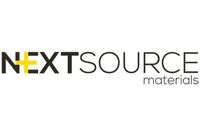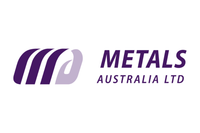Graphite Forecast 2019: Execs Optimistic, Say Investors Must Do Research
CEOs and company executives share their thoughts on graphite market trends in 2018 and the graphite forecast for 2019.
In 2018, demand for graphite continued to grow strongly, underpinned in part by the electric vehicle (EV) boom. Graphite is an essential element in the lithium-ion batteries used to power EVs.
But what will happen to graphite next year? To find out, the Investing News Network reached out to a number of companies in the space to get their thoughts on what’s ahead for graphite in 2019.
Shaun Verner, president and CEO of Syrah Resources (ASX:SYR); Peter Wright, executive director at Bass Metals (ASX:BSM); Stephen Riddle, president and CEO of Asbury Carbons; Ugo Landry-Tolszczuk, president and COO of SRG Graphite (TSX:SRG); Blair Way, president and CEO of Leading Edge Materials (TSXV:LEM); Brent Nykoliation, senior vice president of corporate development at NextSource Materials (TSX:NEXT); and Mike Rosenstreich, managing director at Hexagon Resources (ASX:HXG), were all able to provide insight. Read on to learn their thoughts on the graphite forecast moving ahead.
Graphite trends 2018: The year in review
In 2018, SRG’s Landry-Tolszczuk expected a continued run in energy metals in terms of both pricing and equities based on strong fundamentals.
“Fundamentals remain strong, but starting in June energy metals (cobalt, nickel, graphite, lithium and to a lesser extent, copper) started falling (although prices in graphite haven’t fallen at all in 2018, they have risen) and equities took a huge hit,” he said.
Similarly, Leading Edge’s Way expected an increase in attention for battery materials — which the market saw, but Way said that the demand for products in the western world is lagging behind expectations created by the increased attention.
“This has made investors cautious, which has impacted share prices over the year,” he said.
Speaking about how the graphite market has performed this year, Syrah’s Verner said there’s been a lot of interest for his company’s product. Syrah started production at its Balama project in November 2017.
“We are getting a feel about the overall graphite market, but it is early days. [What we see] right now is a very strong interest in our product worldwide,” he said.
Verner also talked about the differentiation seen in the last couple of years between those who have a historical view of the industrial components of the market, which are primarily steel driven, and those who are very positive about demand from the battery sector.
“This year is the first year where we have seen those views integrate, and the market getting its head around what batteries could mean for supply and demand in the future,” he said, adding that Syrah’s Balama production was another major factor impacting the market in 2018.
According to NextSource’s Nykoliation, in 2018 prices were expected to move up marginally for the larger-flake material (+80/95) for refractory purposes and for -100 mesh material, which is predominately used as the precursor material for anode applications.
“Both ended up happening, which reflects that the market for refractory shows small gains every year, but more importantly that the battery market, while expected to be a high-growth market, is still a small market relative to the traditional uses,” he added.
Speaking about the most challenging aspect of the market this year, Nykoliation said graphite continues to be recognized as a critical battery material, but is consistently overshadowed by the metals used in cathodes — lithium and cobalt.
Additionally, he said the graphite end markets/industry is opaque and complex, and therefore not easily understood by investors. “The biggest challenge continues to be education and re-education of the graphite space to investors. It is very difficult for investors to understand what makes one project better than another and why,” he noted.
Bass Metals’ Wright also talked about some of the misunderstandings in the graphite sector, and what mistakes investors should try to avoid if they are looking to jump into the space.
“First of all is the difference in pricing across the different concentrates,” he said, adding that the second-most-challenging aspect of the space is financing.
SRG’s Landry-Tolszczuk said graphite equities sentiment is directly tied to other energy metals.
“Supply is tight and is expected to remain tight, especially in the larger flake, which is the reason pricing remains high. Equities are low and it is hard to finance construction projects when sentiment and equities are low,” he explained.
Leading Edge’s Way said the most challenging aspect of the market has been the disconnect between demand and supply.
“Demand for battery materials is currently very small and only in Asia,” said Way, adding that investors get excited by the hype, but do not understand the time it is taking for a market for battery materials outside of Asia to develop. “Cell manufacturers in Europe and North America are very slow to establish cell-manufacturing facilities,” he added.
Meanwhile, Hexagon’s Rosenstreich believes the most challenging aspect of the market right now is being able to market a reasonable amount of material.
“We are looking to market 50,000 tonnes of concentrate flake,” Rosenstreich explained, which Hexagon expects to convert into a dozen of different products.
Graphite outlook 2019: Better market expected
As the year comes to an end, many market watchers are wondering what’s ahead for graphite.
In 2019, NextSource’s Nykoliation predicts a better market in general.
“It is almost monthly that we are seeing the major car manufacturers updating the market on their research and development efforts and growth plans for electric vehicle models. These efforts will put continued incremental pressure on the -100 material pricing,” he said.
Additionally, there is a growing trend for manufacturers to source their graphite and value-added anode material from non-Chinese sources, as China continues to grapple with environmental issues.
“Jumbo/extra-large flake (+50/95-97 percent mesh) graphite required for expanded graphite applications (graphite foils) is an increasing market and is commanding the highest prices. Expect to see continued price strength for those applications,” Nykoliation added.
For his part, SRG’s Landry-Tolszczuk highlighted that graphite supply remains tight and prices in graphite have been trending upwards in 2018.
“[This] is expected to continue in 2019,” he said, adding that the market seems uncorrelated to fundamentals right now, so it is hard to predict what will happen to equities in 2019.
Next year, Leading Edge’s Way said the market will see accelerated growth in forecast demand for battery materials — the space will see more indicators of electrification of transportation in all regions.
“It will be good for graphite and battery materials, but it will be tough to manage expectations as the true demand will lag the forecasts and it will be a few more years before we see true battery material demand,” he added.
Speaking about the short-term graphite market, Asbury Carbons’ Riddle said he expects growth in the market, although for prices he expects natural flake graphite will be lower or remain flat next year.
For investors interested in the graphite space, Riddle gave his best suggestion for the new year.
“[As an investor] in the natural flake graphite market, it’s about finding the right junior miner that fits the criteria of being low cost, that has a good business plan and that is realistic in the market,” he said.
Similarly, NextSource’s Nykoliation said investors should do their homework.
“Focus on companies that have technical/feasibility studies completed on their projects that show project economics,” he added.
SRG’s Landry-Tolszczuk suggested investors should pick projects that have a competitive advantage and have a path to production.
“Unlike other resource plays, graphite resources don’t get bought out by majors, they have to go to production. If CAPEX is too large or regulatory processes are too long, projects won’t get done and no value will be driven. Pick projects/management teams which you believe will get built in the next few years with a plan to get there,” he added.
For Way, right now there are some buying opportunities. “Share prices are way down and the fundamentals of these strong battery material companies remain unchanged. It is a good time to average down if you are a believer in the update of electrification of transport,” he added.
For Hexagon’s Rosenstreich, those new to the sector should remember that the graphite market is not a mining play — it is not about mining metrics or resources or even grades, but marketing.
“The resources are relevant, but the biggest valuation driver is the company’s ability to penetrate specific markets and have a sound marketing strategy,” he added.
Graphite outlook 2019: What’s ahead for companies
Looking ahead, Verner shared his thoughts on Syrah, which is developing the world’s largest natural graphite project, and what’s next in terms of supply — something market watchers are eyeing.
The CEO stressed that production at the Balama project in Mozambique will be driven by market demand going forward.
“Next year we expect to produce between 250,000 and 300,000 tonnes and we will move to full capacity depending on demand,” he added.
In August 2018, Bass Metals’ flagship project, the Graphmada large-flake graphite mine, achieved nameplate production, just a couple of months after the mine was commissioned — one of the most important pieces of news for the company this year, Wright said.
Bass Metals’ major corporate objective over the next 12 months is the delivery of a stage 2 upgrade and expansion at its Graphmada large-flake graphite mine by early 2020, which will increase production volumes to 20,000 tonnes per year.
Meanwhile, 2019 is also set to be a busy year for NextSource, which is developing its 100-percent-owned Molo graphite project in Southern Madagascar.
“We are a very advanced project and are just waiting for the mining permit, which we expect by March. Once we have those, we will have immediate news flow regarding mine funding and additional offtake agreements,” Nykoliation said.
Similarly, SRG Graphite, which is focused on developing the Lola graphite deposit in the Republic of Guinea, West Africa, will have plenty of news flow in 2019.
“[We have a] feasibility study coming out in Q2 2019. A lab was built on site and we have employees making graphite from our site as we speak. [There will be] offtake agreements to follow early in the new year,” Landry-Tolszczuk added.
Leading Edge Materials will continue to focus on its flagship asset, the Woxna graphite production facility located in Central Sweden.
“We are growing our portfolio of battery materials in Europe as well as advancing our graphite mine by adding equipment to enable production of battery anode materials,” Way said.
Meanwhile, Hexagon Resources, which is looking to become a vertically integrated graphite business, is focused on developing its McIntosh project in Western Australia to supply high-specification graphite materials to both traditional and emerging markets.
Speaking about what’s ahead for his company, Rosenstreich talked about its joint venture with Mineral Resources (ASX:MIN), the company’s technical test work and how Hexagon will continue to focus on its downstream business.
Don’t forget to follow us @INN_Resource for real-time news updates!
Securities Disclosure: I, Priscila Barrera, hold no direct investment interest in any company mentioned in this article.
Editorial Disclosure: Leading Edge Materials, NextSource Materials and SRG Graphite are clients of the Investing News Network. This article is not paid-for content.
The Investing News Network does not guarantee the accuracy or thoroughness of the information reported in the interviews it conducts. The opinions expressed in these interviews do not reflect the opinions of the Investing News Network and do not constitute investment advice. All readers are encouraged to perform their own due diligence.





